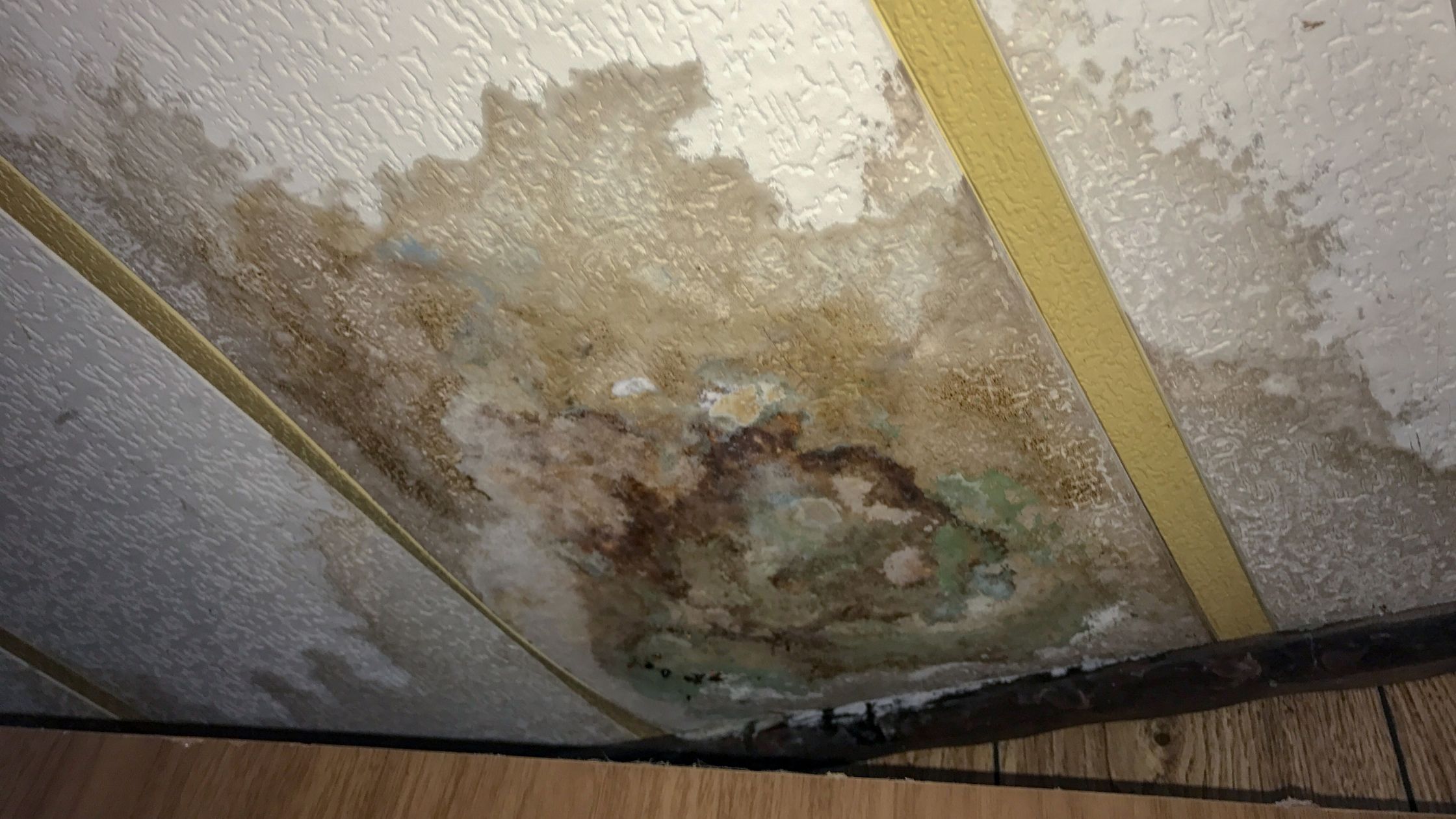Understanding Bathroom Water Harm Triggers
Understanding Bathroom Water Harm Triggers
Blog Article
What're your opinions on How to Repair and Prevent Bathroom Water Damage??

Water damage commonly happens in the bathroom due to the water used everyday. Sometimes, the damage could be a little mold and mildew from the shower. Other times, it's large damage on your floor. Whatever it is, it is always excellent to understand the reason as well as prevent it before it happens.
This overview will experience some of the usual sources of water damage in the bathroom. We will additionally analyze what you can do to prevent these reasons from damaging your bathroom. Allow's dive in.
5 Usual Root Causes Of Water Damage in Shower Rooms
These are the typical reasons you would have water damage in your shower rooms as well as exactly how you can identify them:
Burst or Dripping Pipelines
There are several pipelines lugging water to different parts of your washroom. Some pipes take water to the bathroom, the sink, the taps, the shower, and many other places. They crisscross the tiny location of the washroom.
From time to time, these pipes might get rusty and ruptured. Other times, human action could cause them to leakage. When this happens, you'll find water in the corners of your restroom or on the wall.
To detect this, keep an eye out for gurgling wall surfaces, molds, or mildew. Call a professional emergency situation plumbing professional to repair this when it occurs.
Splits in your wall surface floor tilesv
Washroom wall surface ceramic tiles have been specially made for that function. They safeguard the wall from wetness from individuals taking showers. Nonetheless, they are not undestroyable.
Often, your washroom wall tiles fracture as well as enable some dampness to permeate into the wall. This could possibly damage the wall if you don't take any activity. If you discover a split on your wall tiles, repair it quickly. Don't wait up until it damages your wall.
Overruning bathrooms and also sinks
As human beings, often we make mistakes that might cause some water damage in the bathroom. For example, leaving your sink faucet on could trigger overflowing and damages to various other parts of the shower room with moisture.
Likewise, a damaged commode could trigger overflowing. For instance, a damaged toilet deal with or various other parts of the cistern. When this happens, it could damage the flooring.
As quickly as you observe an overruning sink or toilet, call a plumbing professional to assist take care of it immediately.
Roofing Leakages
Sometimes, the trouble of water damage to the restroom could not originate from the washroom. For example, a roof covering leak might trigger damages to the restroom ceiling. You can identify the damages done by looking at the water spots on the ceiling.
If you locate water discolorations on your ceiling, check the roofing to see if it's damaged. After that, call a specialist to assist resolve the problem.
Excess Moisture
It's trendy to have that lengthy shower and also dash water while you hem and haw as well as act like you're carrying out, but often these acts could cause water damage to your shower room.
Splashing water around can cause water to go to corners as well as create molds. Enjoy exactly how you spread excess dampness around, and when you do it, clean it up to avoid damages.
Conclusion
Water damage to your restroom can be annoying. However, you can handle it if you stop a few of the reasons stated in this guide. Call a professional emergency plumbing technician if you observe any kind of severe damages.
Common Causes of Water Damage in a Bathroom
Water damage can appear virtually anywhere in your home, but bathrooms and basements are the two most common areas. It’s easier to spot causes and signs of water damage in an unfinished basement, but that doesn’t mean it’s any less severe to have water damage occur in your bathroom.
Spotting Signs of Bathroom Water Damage
The bathroom is probably the most common place where you’ll use water in your home. Because of this, there’s a relatively high risk of sustaining water damage. The longer water damage goes untreated, the worse it can get. Therefore, you need to know what signs to look for and deal with any damage as soon as possible.
There are often items like rugs, bottles, towels, and so on crammed in every corner of the typical bathroom, which can trap moisture and hide budding problems. But what usually causes the most water damage in a bathroom? How can you spot it, especially with so many items in the way? This article addresses several common ways to notice, prevent, or fix bathroom water damage.
A Recurring or Persistent Musty Odor
Wherever there’s water damage, you almost always find small spots of mold, or even a full-blown infestation. When you leave mold to thrive and grow, it creates a stinking, musty odor that’s pretty hard to miss. Don’t leave musty smells unaddressed—try to find the source so that you can have it repaired before more damage occurs.
Damaged Grout or Caulk
When these sealing agents fail, virtually nothing prevents water from seeping past the barrier, causing water damage and mold growth underneath wall and flooring tiles. Damaged showerheads, spigots, grout, or caulking, combined with excessive moisture, create the perfect environment for mold to thrive.
Loose Tiles or Spongy Floors
Moldy and water-damaged walls make it more difficult for tiles to stay in place, which can cause them to become loose. In addition, persistent moisture on a bathroom floor can result in water damage to the subflooring layer, causing it to degrade, lose integrity, and feel spongy.
Stubborn Growth
If there’s visible mold in your bathroom that you’ve removed more than once, the most likely reason it keeps coming back is a deeper infestation in the walls or floors. It’s critical to deal with this problem immediately to prevent further damage and new or worsening health issues.
https://advantaclean.com/blog/common-causes-of-water-damage-in-a-bathroom/

Common Causes of Water Damage in a Bathroom
Water damage can appear virtually anywhere in your home, but bathrooms and basements are the two most common areas. It’s easier to spot causes and signs of water damage in an unfinished basement, but that doesn’t mean it’s any less severe to have water damage occur in your bathroom.
Spotting Signs of Bathroom Water Damage
The bathroom is probably the most common place where you’ll use water in your home. Because of this, there’s a relatively high risk of sustaining water damage. The longer water damage goes untreated, the worse it can get. Therefore, you need to know what signs to look for and deal with any damage as soon as possible.
There are often items like rugs, bottles, towels, and so on crammed in every corner of the typical bathroom, which can trap moisture and hide budding problems. But what usually causes the most water damage in a bathroom? How can you spot it, especially with so many items in the way? This article addresses several common ways to notice, prevent, or fix bathroom water damage.
A Recurring or Persistent Musty Odor
Wherever there’s water damage, you almost always find small spots of mold, or even a full-blown infestation. When you leave mold to thrive and grow, it creates a stinking, musty odor that’s pretty hard to miss. Don’t leave musty smells unaddressed—try to find the source so that you can have it repaired before more damage occurs.
Damaged Grout or Caulk
When these sealing agents fail, virtually nothing prevents water from seeping past the barrier, causing water damage and mold growth underneath wall and flooring tiles. Damaged showerheads, spigots, grout, or caulking, combined with excessive moisture, create the perfect environment for mold to thrive.
Loose Tiles or Spongy Floors
Moldy and water-damaged walls make it more difficult for tiles to stay in place, which can cause them to become loose. In addition, persistent moisture on a bathroom floor can result in water damage to the subflooring layer, causing it to degrade, lose integrity, and feel spongy.
Stubborn Growth
If there’s visible mold in your bathroom that you’ve removed more than once, the most likely reason it keeps coming back is a deeper infestation in the walls or floors. It’s critical to deal with this problem immediately to prevent further damage and new or worsening health issues.
https://advantaclean.com/blog/common-causes-of-water-damage-in-a-bathroom/
I discovered that article about How to Repair and Prevent Bathroom Water Damage? while doing a lookup on the search engines. Loved our blog posting? Please share it. Let others find it. Thanks a lot for going through it.
Dial, stress less! Report this page